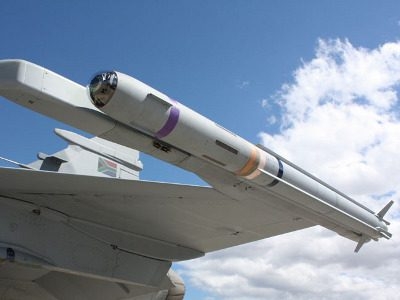South Africa’s Denel Dynamics fifth generation A-Darter air-to-air missile has been issued an A type certification and qualification, after undergoing formal review. These, brings the missile development cycle to a close.
The A-Darter missile will be integrated into the SAAB JAS 39 Gripen fighter jets operated by the Brazilian and South African Air Force. The data package and the type certificate was issued to the Armaments Corporation of South Africa (ARMSCOR) and to the Brazilian Air Force’s Department of Aerospace Science and Technology (DCTA) at the end of September.
According to Denel, the data package contains all the necessary technical information about the missile, while the Type Certificate received by Denel Dynamics formally acknowleges that the A-Darter missile meets the technical, operational, logistical, industrial and safety requirements.
More specifically, the Institute for Industrial Development and Coordination (IFI) and Directorate System Integrity (DSI) are responsible for certifying the A-Darter missile gir Brazil and South Africa respectively.
For the A-Darter, the next step is for Denel and Brazil to begin serial production, that is, if an order for the missile is secured. The A-Darter was planned to equip the Brazilian Air Force 36 GripenE/F fighters and the SAAF 26 Gripen C/D fighter jet. It was initially planned to be integrated into the SAAF Hawk LIFT aircraft, but the plan was aborted due to budget constraints.
The A-Darter development began under Project Assegai in 1995 however, a 2006 contract between ARMSCOR and Brazil provided the necessary funding to continue.
According to Denel, the V3E Agile Darter (A-Darter) is a state-of-the-art ITAR-free wingtip fifth generation short range air-to-air missile with lock-on after launch (LOAL) and memory tracking capabilities.
It has a 20 kilometre range, Mach 3 body-lift missile with thrust vector control for high angle of attack agility, has a low launch signature motor, and a multi-element imaging infrared seeker with a look angle of 180 degrees.
The IIR seeker head is able to overcome standard counter-measures such as flares.
It can be designated using the aircraft’s radar, helmet sight or the missile’s autonomous scan feature if radar silence is required. A high look angle means it can engage targets next to or even behind the launch aircraft.




